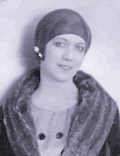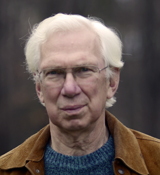Lightyears Collection
Elizabeth Arden

Elizabeth Arden
1878-1966
"Until quite recently, perfume was not a major focus at Elizabeth Arden. Today Elizabeth Arden markets Britney Spears, Elizabeth Taylor, Geoffrey Beene, and Halston (with Jeff Gordon) fragrances among others. Yet the name "Elizabeth Arden" pops up repeatedly in the study of 20th century perfumes."
To understand why the name "Elizabeth Arden" is so embedded in perfume history, we must look to the woman, Elizabeth Arden, born Florence Nightingale Graham in 1887 in rural Canada. Like Coco Chanel, she learned the art of selling by selling cabbage at farmers markets. Like Coco Chanel, she developed a love of horses at a young age. Like Coco Chanel, she was born in the 1880's. By 1922 she had opened her first beauty salon in Paris.
Restless and obsessed with the idea of providing women with beauty products, she left her family farm (at the age of 24), moved first to Toronto and then, in 1908, to New York where her brother was already established.
A bookkeeping job with E.R. Squibb put her in contact with the world of chemistry. Leaving Squibb for a cashier's job with beauty salon operator Eleanor Adair, she was now in the world of beauty. She became a "treatment girl" and learned more about the business. In 1909 she went into business for herself, first with a partner, Elizabeth Hubbard, then, when Hubbard departed, by herself. She now because "Elizabeth" and "Arden"? It is said that the name came from a poem by Tennyson. By coincidence, "Arden" sounds not too unlike "Adair" — who was already well known and well established. All this was just the beginning.
From treatments she quickly moved on to products. Cosmetic chemist A. Fabian Swanson gave her Venetial Cream Amoretta and Ardena Skin Tonic. Her products were wholesaled to department stores and drug stores, drug stores being, at the time, an outlet for quality products. In a relatively short span of years she was marketing her products globally.
The first products were treatment products to improve the skin (her own skin was said to have been beautiful beyond any need for improvement). Then came cosmetics. Vogue magazine, in 1910, suggested that even non-hussys might benefit from the use of a little "paint". Elizabeth Arden jumped into it.
Then there were the spas, in Maine and Arizona, where women could go for an extended regimen of treatments. Finally there were the race horses who were also given Elizabeth Arden beauty products. They must have worked because her Maine Chance Stable, in Lexington, Kentucky, produced the 1947 Kentucky Derby winner, "Jet Pilot".
While she considered her greatest rivals to be Helena Rubinstein and Dorothy Gray (and, somewhat later, Charles Revson), her success paralleled that of Chanel, who was not a perfumer, and Ernest Daltrof (Caron) and François Coty, who were. What we are seeing between 1900 and 1930 is the rise of the modern "cosmetics and fragrances" business by unestablished, outside the system, upstarts who achieved very great success.
The first Elizabeth Arden perfumes, Arden Rose, Lilac, and Italian Lilac, were introduced in 1922. Her Blue Grass (remember the race horses and stable in Kentucky!) was introduced in 1934 and is still on the market today.
Perfumes By Elizabeth Arden
| Fragrance | Perfumer | Bottle |
| Arden Rose (1922) | ||
| Italian Lilac (1922) | ||
| Lilac (1922) | ||
| La Joie d'Elizabeth (1929) | ||
| Le Rêve d'Elizabeth (1929) | ||
| Mon Amie Elizabeth (1929) | ||
| L'Amour Elizabeth (1929) | ||
| Blue Grass (1936) | ||
| Cyclamen (1938) | ||
| It's You (1938) | Edmond Roudnitska | |
| On Dit (1944) | Edmond Roudnitska |
If you have any information you would like to share with us about Elizabeth Arden, please use the message sender below.
|


Philip Goutell
Lightyears, Inc.

